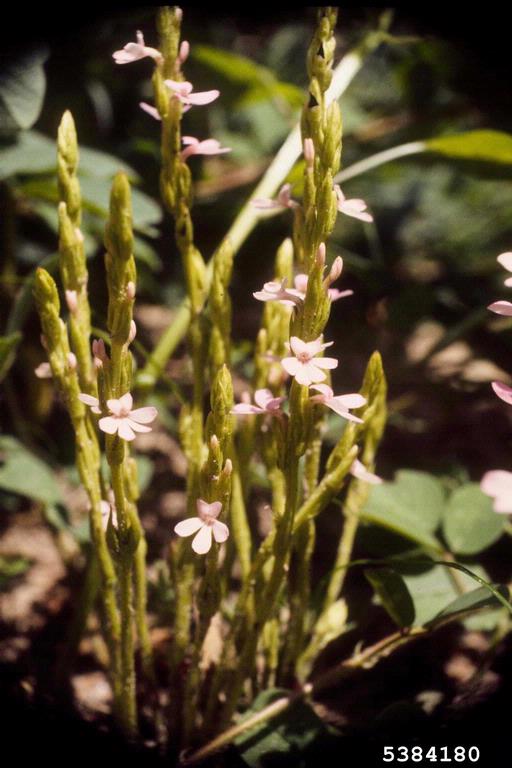Symptoms, description and lifecycle
Asiatic witchweed is an obligate parasite (it cannot develop independently from a suitable host). Plants are normally 15.2-30.5 cm tall but some have been recorded to grow to 61 cm. The stems are hairy, green, to 30 cm tall. Leaves are linear or filamentous and around 2.5 cm long. Flowers are small, less than 1.3 cm in diameter, occurring in or on loose spikes, and can vary greatly in colour including white to yellow, red, or purple. The flowers given way to swollen seed pods that contain thousands of microscopic seeds per pod.
Organism
Striga asiatica (L.) Kuntze
Host range
Asiatic witchweed is a parasitic weed of grain (especially summer crops) and sugar crops.
Method of spread
The small seeds are wind dispersed, can be moved with runoff following heavy rains, on the feet of humans and livestock, on farm implements and in animal faeces following their ingestion of the seed.
Confused with?
Symptoms induced by Asiatic witchweed can be confused with drought damage, nutrient deficiency or vascular disease.
Where?
Africa, Asia and America. There are records that Asiatic witchweed has been found in Australia at different stages.

Image 37. Asiatic witchweed. Source: Florida Division of Plant Industry, Florida Department of Agriculture and Customer Services. Bugwood.org


